Stereograms 4
Free-fuse each pair of neighbors. Then you will see a stereoscopic object.
since June 18, 2009
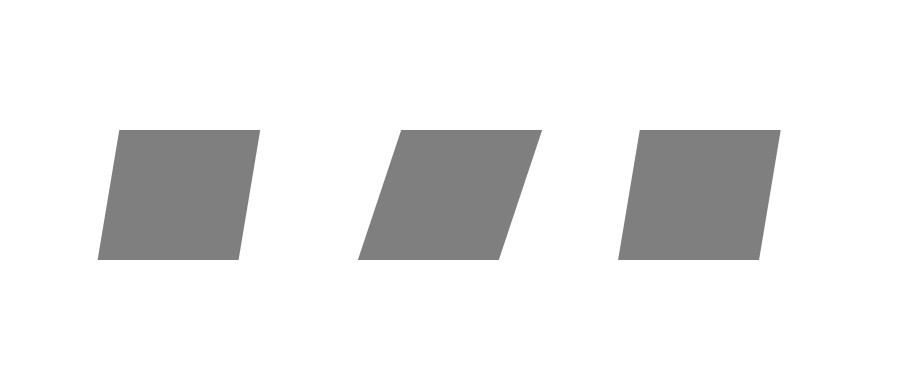
"Overestimation of stereoscopically tilted sides"
When neighboring parallelograms are cross- or uncross-fused, the oblique sides appear to be tilted in depth and appear to be longer than the upper or lower sides, though the oblique lines are actually slightly shorter than the upper or lower sides (If the latter are 100, the former are 93.6 for the left and right parallelograms and 97.3 for the middle one). I think this effect corresponds to the stereoscopic counterpart of the Shepard illusion.
Besides, the upper side appears to be different in size from the lower side, a phenomenon that a farther object appears to be larger than a nearer object even if the physical or retinal sizes are the same. Accordingly, physically parallel oblique sides do not appear to be parallel. I think this effect corresponds to the stereoscopic counterpart of the Leaning Tower illusion.
Copyright Akiyoshi Kitaoka 2010 (December 17)
cf. Thouless, R. H. (1931) Phenomenal regression to the real object. I. British Journal of Psychology, 21, 339-359. <note added February 26, 2011>
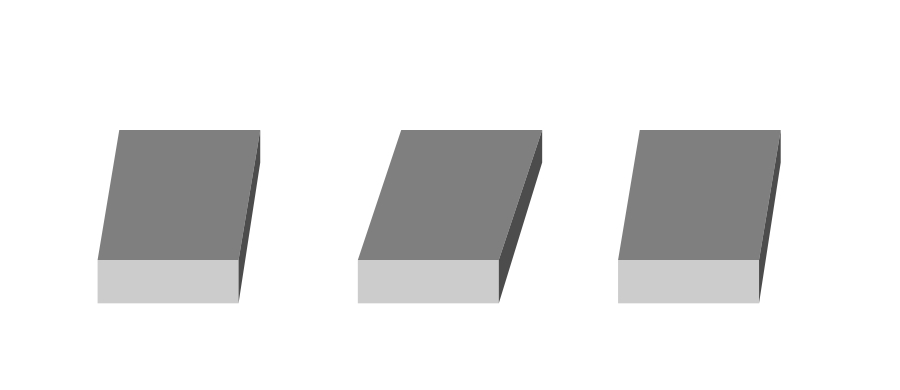
"Shepard illusion and overestimation of stereoscopically tilted sides"
Although the oblique lines are actually slightly shorter than the upper or lower sides (If the latter are 100, the former are 93.6 for the left and right parallelograms and 97.3 for the middle one), the oblique sides appear to be the same as or longer than the upper or lower sides. This effect is the Shepard illusion.
When neighboring parallelograms are cross- or uncross-fused, the effect is enhanced. This effect should be regarded as an addition of the Shepard illusion and overestimation of stereoscopically tilted sides.
Besides, the upper side appears to be different in size from the lower side, a phenomenon that a farther object appears to be larger than a nearer object even if the physical or retinal sizes are the same. Accordingly, physically parallel oblique sides do not appear to be parallel. I think this effect corresponds to the stereoscopic counterpart of the Leaning Tower illusion.
Copyright Akiyoshi Kitaoka 2010 (December 17)
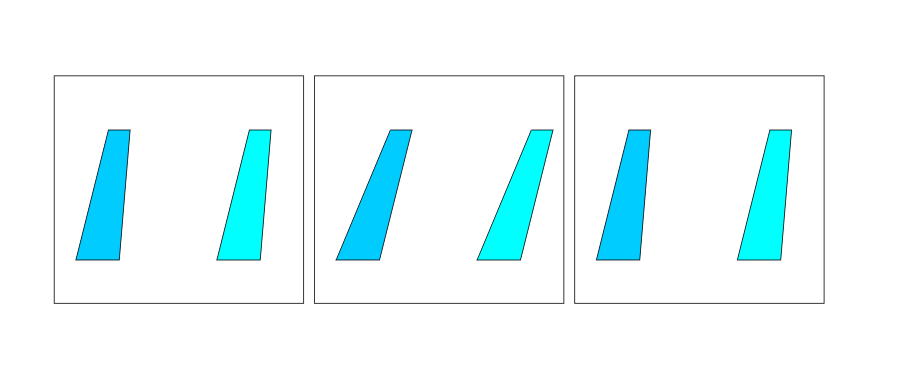
"Stereoscopic counterpart of the Leaning Tower illusion"
Two trapezoids in each frame are the same shape and size and aligned in parallel, but the right one appears to be tilted more clockwise than the left one (Leaning Tower illusion). This effect is enhanced by binocular stereopsis in that the upper (shorter) side appears to be farther than the lower (longer) side. On the other hand, this effect is decreased by binocular stereopsis in that the upper (shorter) side appears to be nearer than the lower (longer) side.
Copyright Akiyoshi Kitaoka 2010 (December 17)
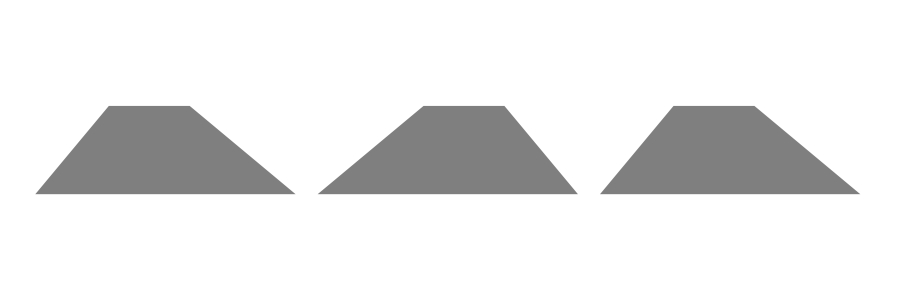
"Stereoscopic counterpart of the Osa illusion"
The oblique sides in each trapezoid form an angle of 90 degree, which is strongly underestimated by binocular stereopsis. This effect is stronger when the upper (shorter) side appears to be farther than the lower (longer) side. I suggest a close relationship to the "overestimation of stereoscopically tilted sides".
Copyright Akiyoshi Kitaoka 2010 (December 17)

"Osa illusion and its stereoscopic counterpart"
The oblique sides of the contour trapezoid of the central blue road form an angle of 90 degree, which is underestimated (Osa illusion). This effect is enhanced by binocular stereopsis. This effect is stronger when the upper (shorter) side appears to be farther than the lower (longer) side.
Copyright Akiyoshi Kitaoka 2010 (December 17)
Thanks to Idesawa sensei for discussion

"Osa illusion and its stereoscopic counterpart: a Xmas version"
The oblique sides of each trapezoid form an angle of 90 degree, which is underestimated (Osa illusion). This effect is enhanced by binocular stereopsis. This effect is stronger when the upper (shorter) side appears to be farther than the lower (longer) side.
Copyright Akiyoshi Kitaoka 2010 (December 17)
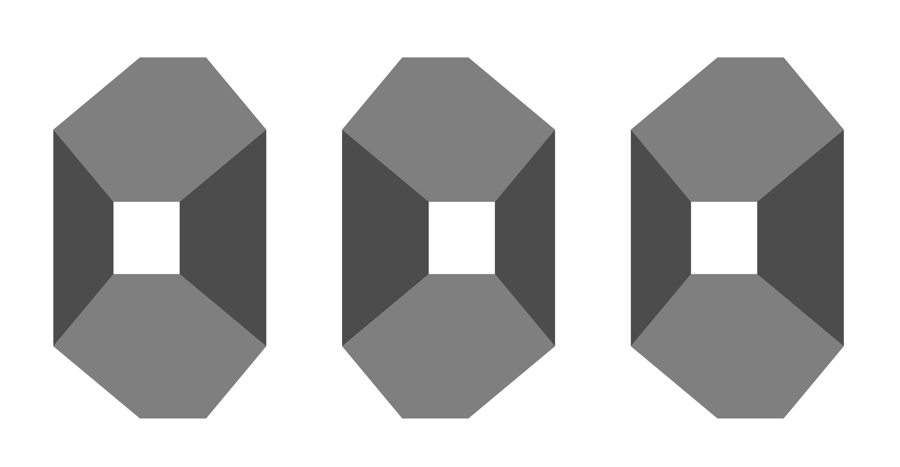
"Stereoscopic counterpart of the Osa illusion: an obuse angle version"
The two oblique edges in a particular right or left side of a hexagon form an angle of 90 degree, which is strongly overestimated by binocular stereopsis.
Copyright Akiyoshi Kitaoka 2010 (December 19)
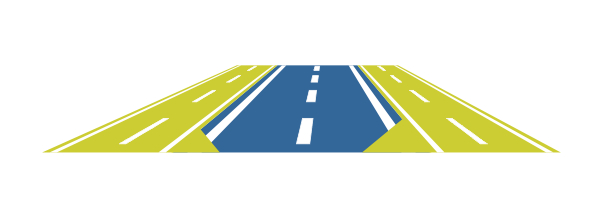
"Osa illusion: an obuse angle version"
The two oblique edges in a particular right or left side of a hexagon form an angle of 90 degree, which appears to be overestimated.
Copyright Akiyoshi Kitaoka 2010 (December 20)
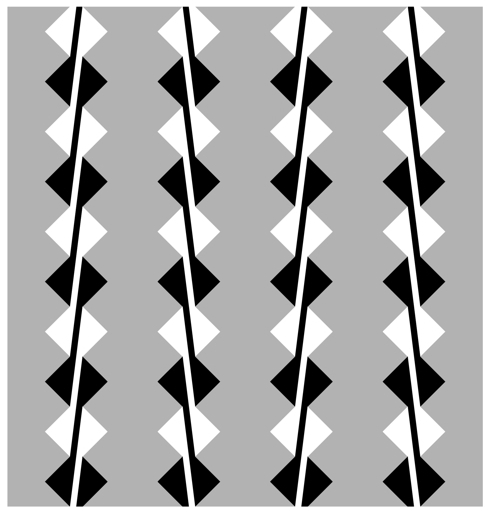
"Stereogram of the Fraser illusion"
Locat tilts in depth are observed but no global tilt in depth is obtained.
Copyright Akiyoshi Kitaoka 2010 (August 6)
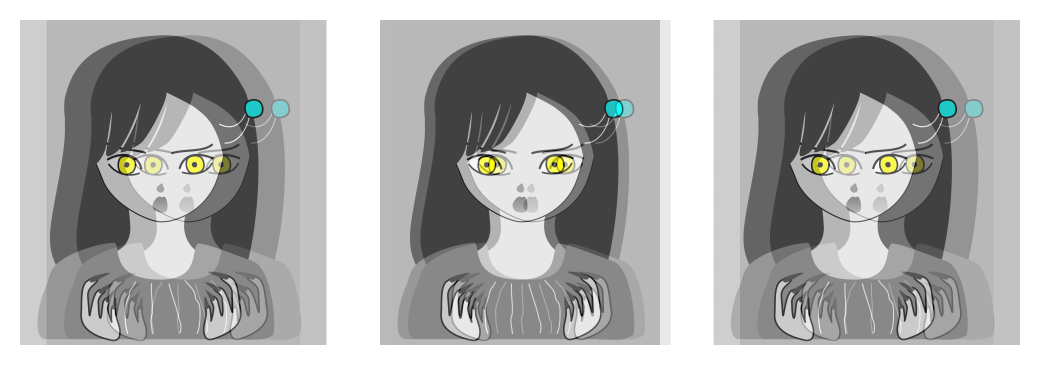
"Transparent Panum's limiting case - Quadruple images"
Quadruple images in depth are observed with binocular fusing. Two by two makes four?
Copyright Akiyoshi Kitaoka 2009 (July 1)
Red circles shows the four depth.
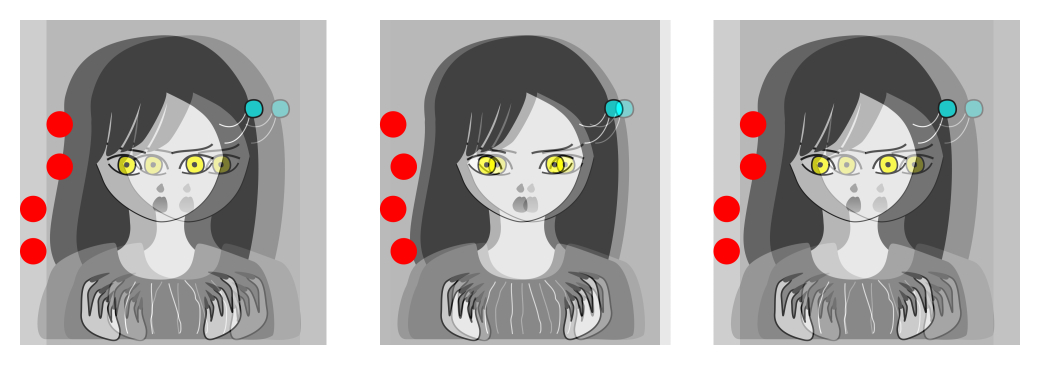
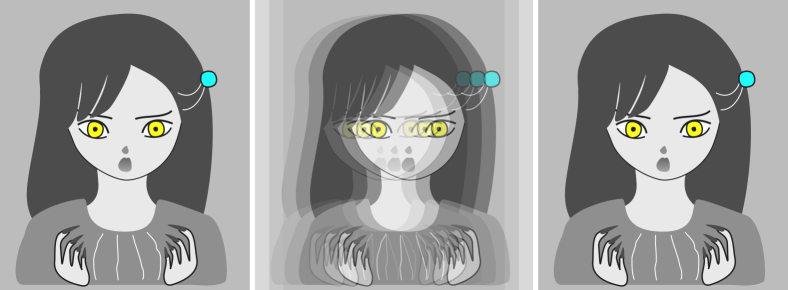
"Transparent Panum's limiting case - Triple images"
Triple images in depth are observed with binocular fusing.
Copyright Akiyoshi Kitaoka 2009 (June 29)
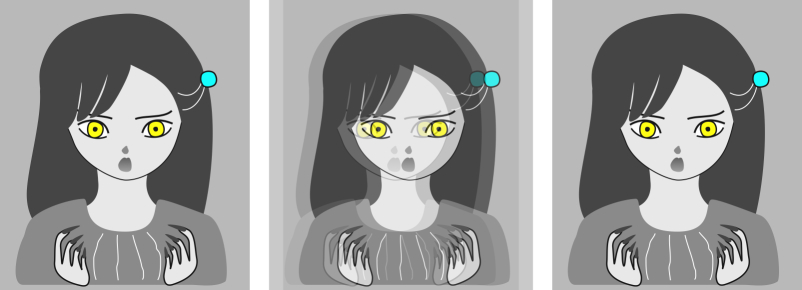
"Transparent Panum's limiting case"
Double images in depth are observed with binocular fusing.
Copyright Akiyoshi Kitaoka 2009 (June 29)
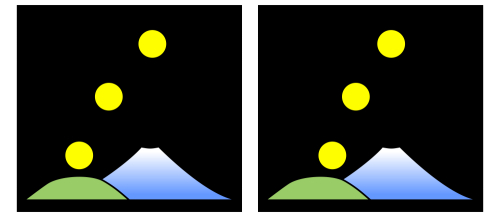
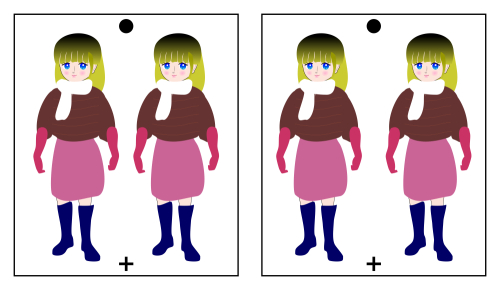
"Demonstration of stereoscopic size constancy"
An object that appears to be nearer with binocular stereopsis appears to
be smaller larger than an object that appears to be farther even if the retinal images of
these two objects are of the same size.
Copyright Akiyoshi Kitaoka 2009 (June 18)
Part of the caption was corrected on January 28, 2012. Thanks to Luiz.
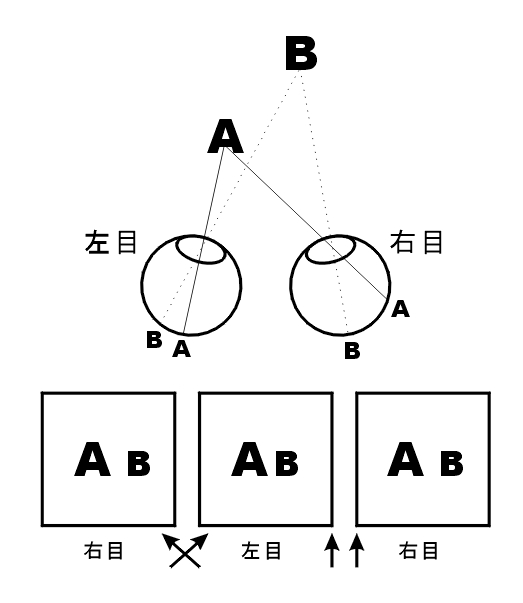
"Explanation of binocular stereopsis"
When A is nearer to the observer than is B, the image of A is projected to a more temporal part in each retina than that of B (binocular disparity). Based upon this disparity, the brain produces binocular stereopsis of the positions of A and B.
Copyright Akiyoshi.Kitaoka 2006 (June 30)
![]() means the right eye in Japanese (probably also in Chinese), while
means the right eye in Japanese (probably also in Chinese), while![]() means the left eyes.
means the left eyes.